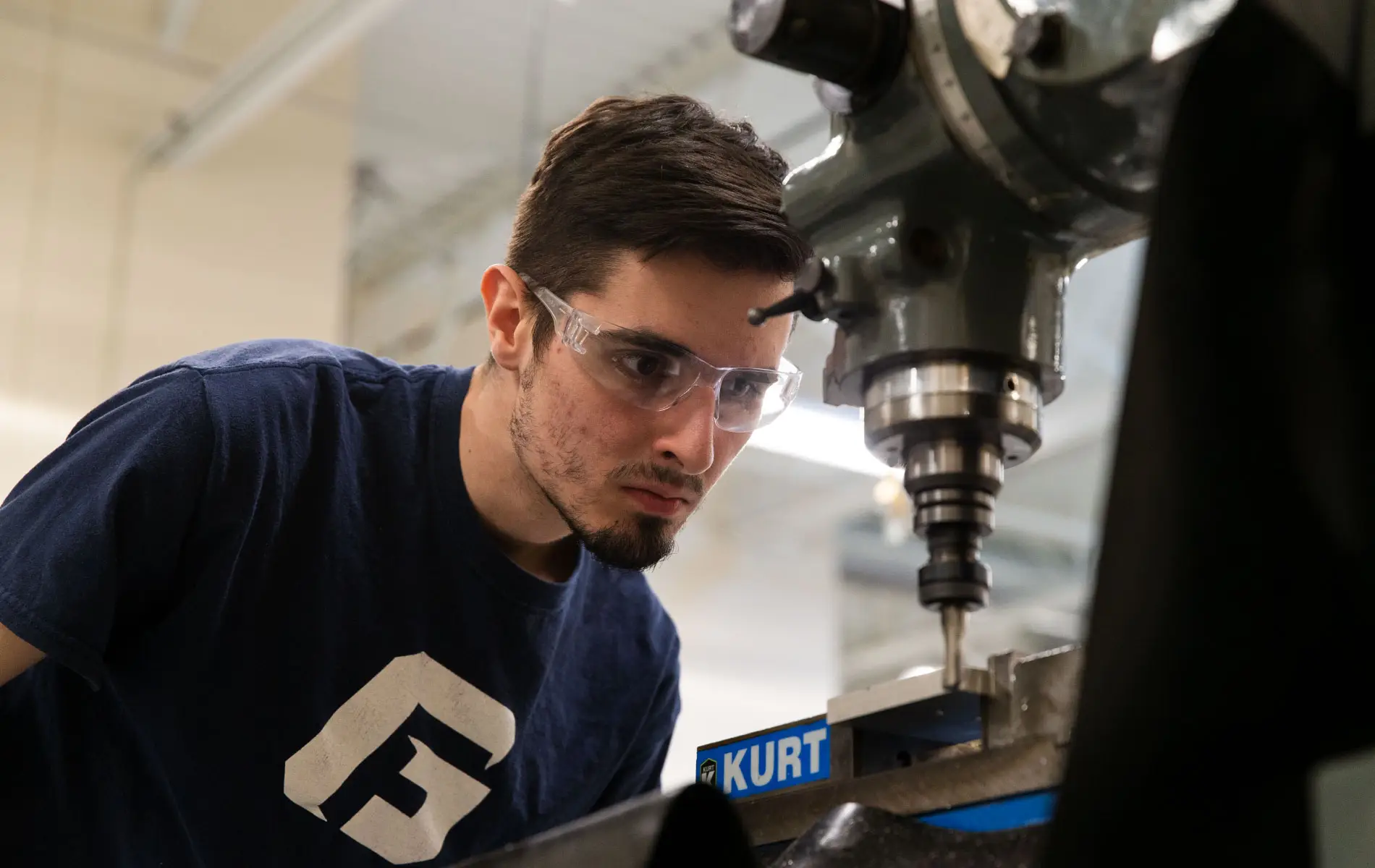
Mechanical Engineering Concentration
At A Glance
Program Type
Concentration of the engineering major (BS)
Accreditation
Northwest Commission on Colleges and Universities (NWCCU), Accreditation Board for Engineering and Technology (ABET)
Recognition
U.S. News and World Report “Best Undergraduate” engineering program
On this page:
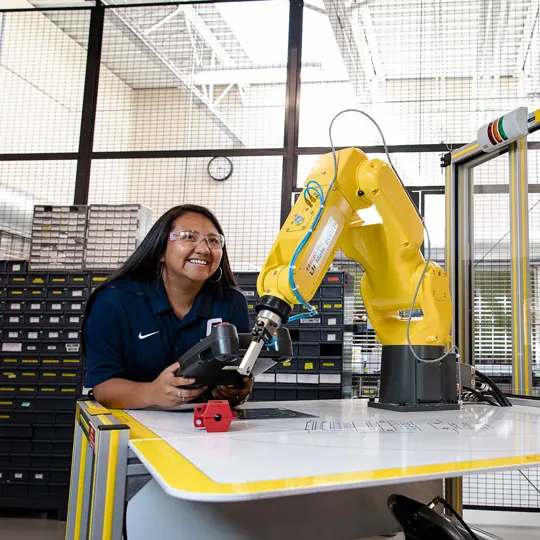
The work of mechanical engineers impacts our lives on a daily basis. You can see mechanical engineer’s hands in the power-producing machines we use, from refrigerators and escalators to electric generators and internal combustion engines. They are the innovators who research, design, build and test the mechanical and thermal sensors in our tools, engines and machines.
In a nutshell, if you’re fascinated by robotics, machinery, and computer and electronic product development – and can see yourself dreaming up engineering solutions in arenas ranging from architecture to transportation – our mechanical engineering concentration within the engineering major is right for you!
Think about it: Someday, your fingerprints could be seen in transmissions, engine parts, aircraft engines, control systems, gas and wind turbines, robots, and artificial organs and limbs.
- #1 Christian engineering program in the West - U.S. News (2025)
Choose a Specialization Area
In this concentration, you’ll learn the principles of engineering, physics, math and science for the manufacturing of mechanical systems, preparing you to design, develop and test mechanical and thermal sensors and devices, including tools, engines and machines.
As a bonus, you have the opportunity to specialize in a certain area, whether that be in energy conversion, solid mechanics, dynamic systems or manufacturing processes. And you will do so in small classes led by faculty mentors who will provide personalized attention in an applications-based learning environment where theory and practice connect.
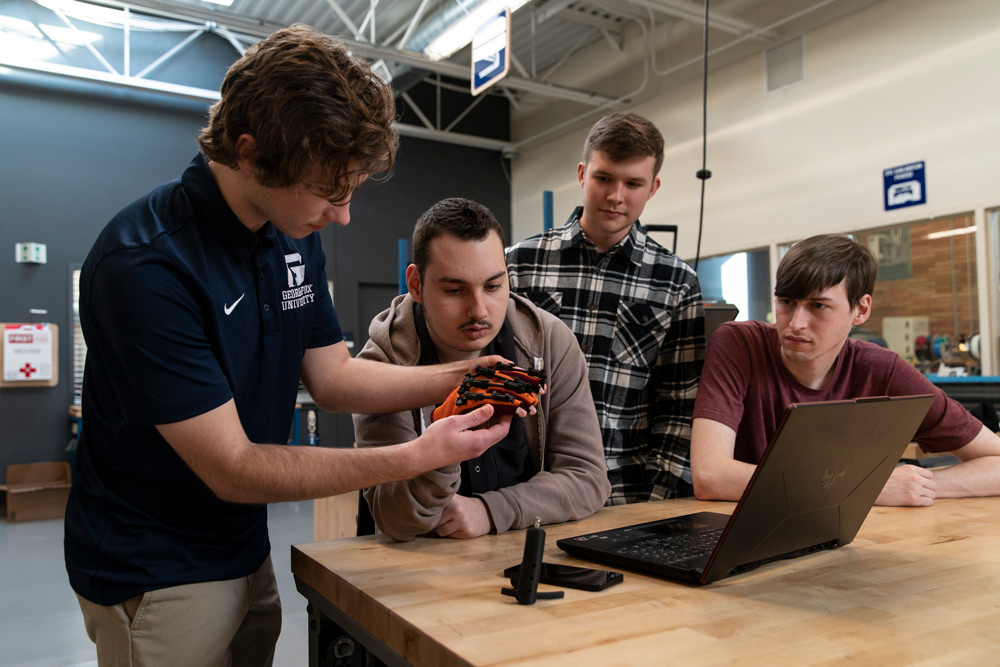
Servant Engineering: Creative Solutions for the Underserved
We take Christ's call to use our God-given gifts and abilities to serve others. To put that into practice, the Servant Engineering program is a core curricular requirement. In it, you will team up with industry professionals to research, design and deliver engineering solutions to address humanitarian needs.
All our third-year students work on interdisciplinary teams, creating solutions to significant technical challenges through a human-centered design approach.
Among our recent projects:
- Clean cook-stove technologies for meeting the basic needs of refugees, impoverished people and communities in the developing world
- Augmentative communication and physical therapy devices for patients and staff at the Providence Center for Medically Fragile Children in Portland
- Design of a bridge at a ranch for fatherless youth in Yamhill, Oregon
- An auto-resistive enhancement to an exercise bicycle for use in focused physical therapy
- Rugged wheelchair designs for individuals suffering with cerebral palsy in the slums of Nairobi, Kenya
- Creation of a prosthetic device to assist one of our own – an engineering student born with symbrachydactyly, a condition characterized by limb abnormalities
- Design of “The Bouncinator 3000,” a custom-made device that gives a young girl with physical disabilities newfound freedom
Mentorship Opportunities
Students in the engineering program have the opportunity to engage in industry mentorship through the Ignite program. As an Ignite member, you are matched with Christians in the industry. You’ll meet monthly to discover opportunities, develop connections, address career gaps, and ask questions.
Program Distinctives Why Study Mechanical Engineering at George Fox?
-
Develop your critical-thinking skills and entrepreneurial mindset.
-
Learn in an environment that emphasizes a human-centered approach to engineering design.
-
Start your hands-on lab experience as a first-year student.
-
Participate in Senior Design to apply your knowledge and design skills gained through coursework to an industry-based project.
-
Benefit from our strong connections with industry.
-
Develop the skills you will need to adapt to a 21st-century job market.
Courses / Curriculum What Will I Study?
Recent mechanical engineering projects have included:
- Compressed air engine design and machining
- Mechanical failure analysis and redesign
- Reciprocating air compressor
- Wind turbine blade optimization
- Eccentric Venturi flow meter analysis
- Campus energy study and carbon footprint assessment
Cornerstone Core
The Cornerstone Core is a set of 12 courses across 10 academic disciplines that undergraduate students take at George Fox to cultivate their character within the Christian context.
As an alternative to Cornerstone Core, students can participate in our great books honors program.
Mechanical Engineering Requirements
×Mechanical Engineering (54 credit hours)
Complete the following:
Choose two of the following:
Choose one of the following:
Bachelors (BS) in Engineering Requirements
×Required for all concentrations
Complete the following:
Complete the following.
Concentrations (53-55) - choose one
Complete the following courses
Choose one of the following three sequences:
Medical Device Sequence
Pre-PT Sequence
Pre-OT Sequence
Complete the following
Complete the following:
Complete the following
Choose one additional math or science elective from the following:
Complete the following
Choose one additional math or science elective from the following:
Complete the following:
Choose two of the following:
Choose one of the following:
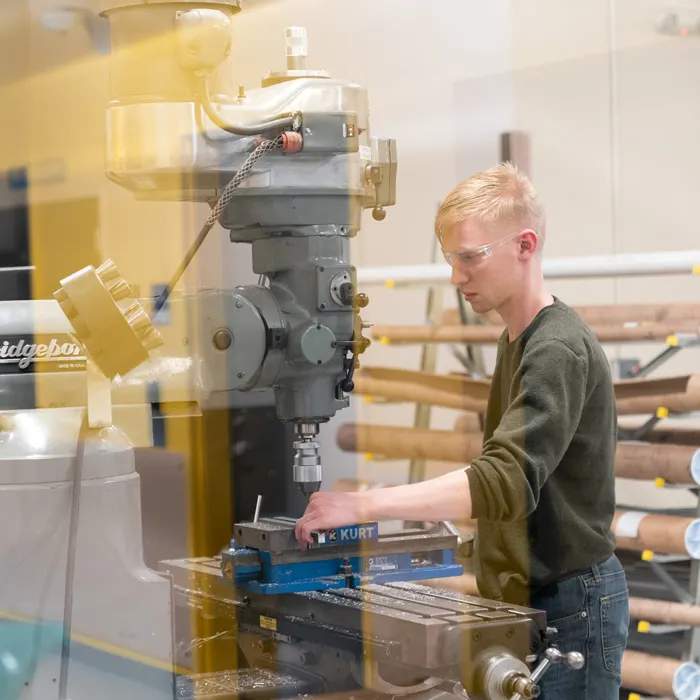
Our spaces/Where Will I Learn?
Maker Space: Where Innovative Ideas Come to Life
The facility includes:
- A 24-station computing lab
- Eight meeting rooms with 48-inch monitors
- A wood shop with a large computer numerical control (CNC) router
- A metal shop with a CNC milling machine
- And so much more
These spaces surround an open configurable collaboration space known as "the Hub," a 6,000-square-foot area used by students representing a wide range of majors. The computer labs have the processors and computer systems needed to accommodate the demands of our major.
Career Outlook What’s After George Fox
Employment of Mechanical engineers is projected to grow 9% from 2024 to 2034, according to the U.S. Bureau of Labor Statistics, faster than the average for all occupations.
Employment of mechanical engineers is expected to increase as automation and innovation create demand for these workers to design, develop, test, and maintain a variety of products and systems. As manufacturing processes incorporate more complex automation machinery, mechanical engineers are expected to be needed to help integrate this equipment into existing systems.
- Electrical Failure Analysis Engineer, Intel
- Embedded Software Design Engineer, Tektronix
- Semiconductor Design Engineer, Teradyne
- Reliability Engineer, Lattice Semiconductor
- Various engineering positions, Daimler Trucks North America
- Mechanical Engineer, Puget Sound Naval Shipyard
- Applications Engineer, MCAD Technologies
- Development Engineer, Contech Engineered Solutions
- Project Engineer, Anderson Construction
- Civil Design Engineer, KPFF Consulting Engineers
- Teradyne, Portland
- CUI, Portland
- Intel, Beaverton, Oregon
- Lattice Semiconductor, Portland
- HP, Boise, Idaho
- 3D Systems, Wilsonville, Oregon
- Tektronix, Beaverton, Oregon
- Climax, Newberg, Oregon
- Cascade Steel, McMinnville, Oregon
- Biotronik, Beaverton, Oregon
- MIT (Mechanical Engineering)
- Cal Poly (Electrical Engineering)
- Johns Hopkins University (Biomedical Engineering)
- Purdue University (Mechanical Engineering, Astronautics Engineering)
- USC (Astronautical Engineering)
- Virginia Tech (Biomedical Engineering)
- CU Boulder (Electrical Engineering, Aerospace Engineering)
- Wake Forest (Biomedical Engineering)
- Montana State University (Mechanical Engineering)
- UC San Diego
- University of Oregon (Sports Product Design)
- Oregon State University (Electrical/Computer Engineering, Civil Engineering, Mechanical Engineering)
- University of Washington (Electrical/Computer Engineering, Mechanical Engineering)
- University of Georgia (Electrical Engineering)
- Boise State University (Electrical Engineering)
- Portland State University (Electrical Engineering)
- University of Rochester (Electrical Engineering)
- Georgia Institute of Technology (Computer Engineering, Mechanical Engineering)
- Michigan Tech (Mechanical Engineering)
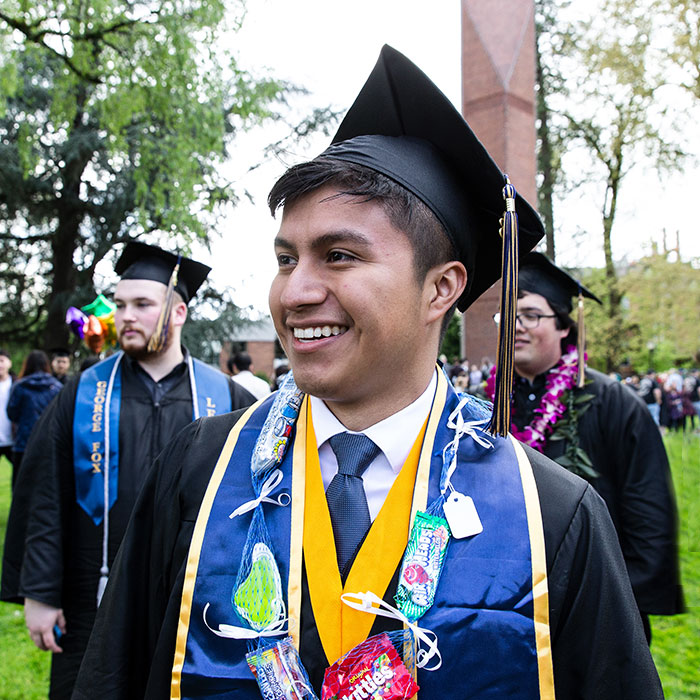
The Bouncinator 3000
Take a look at the Bouncinator 3000. Developed specifically to help Genevieve with mobility, the bouncinator was created over the course of an entire academic year by a team of five George Fox students in the university’s Servant Engineering program.
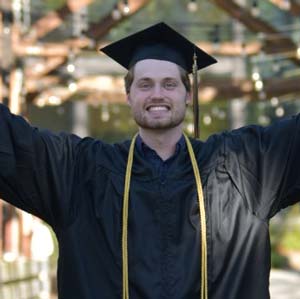
Noah Brouwer
Associate Engineer, General Atomics ASI
I won’t forget my engineering professors, who impacted me not only by teaching in the classroom but by caring for us and often leading devotional studies like [Engineering Your Soul]. After graduating from Fox, I am confident in my engineering ability and prepared for what comes next.
Chat with a current student
Hobbies & Interests: #Running, Triathlon, #Reading📖, Playing Saxophone, #Rock Climbing, #Ultimate Frisbee
About Me: Hey! My name is Luke and I am a Mechanical Engineering major. I love doing active things with my friends, learning about the world, and trying new...Read more
Ask Me About: Adventures in the PNW
“What’s your favorite class?”
“What’s the best student event?”
Request Information About Mechanical Engineering
